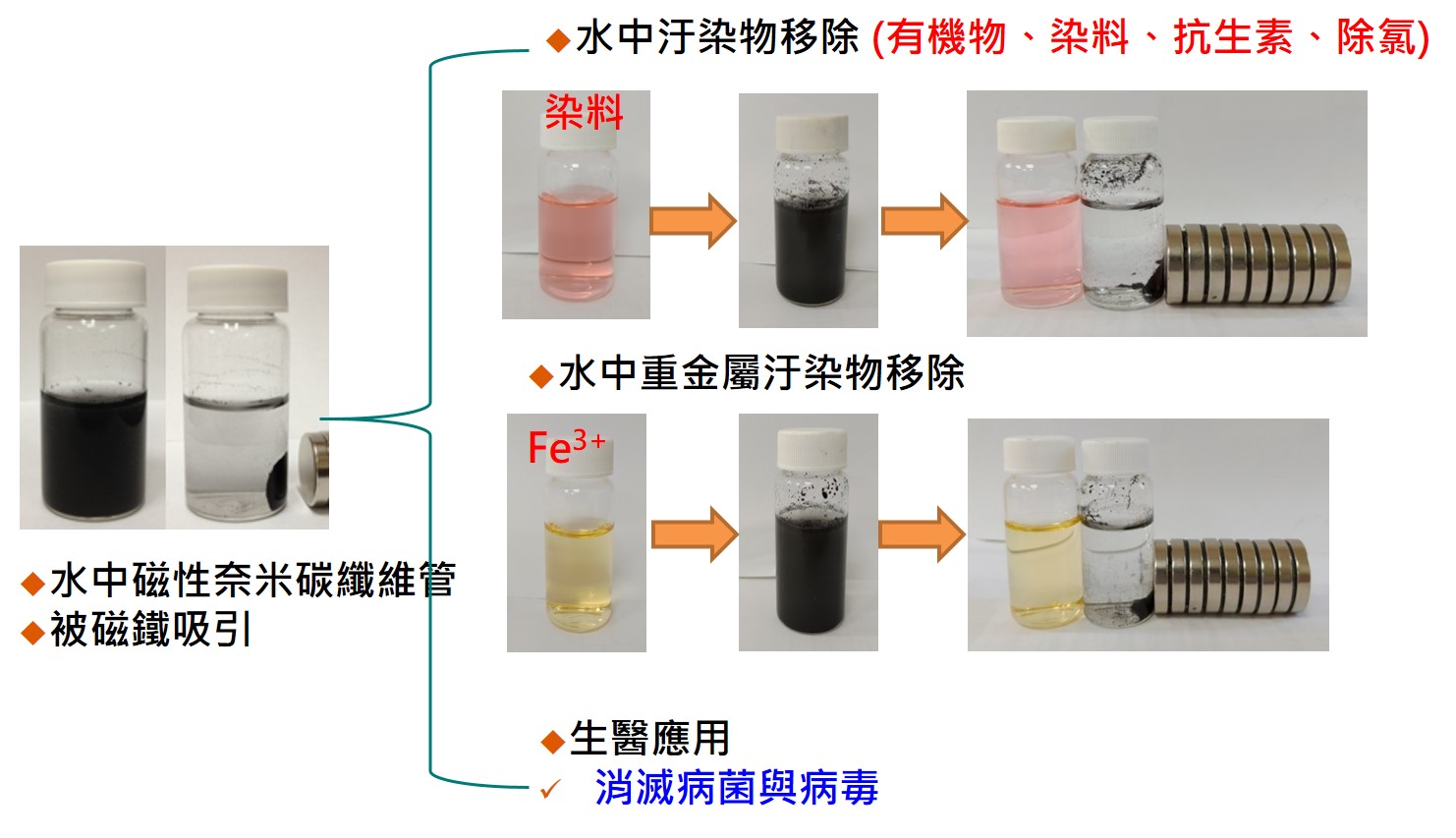| Technical Name | Sustainable development of CO2: CO2 chemically converted to magnetic carbon nanofibers and their environment and biomedical applications | ||
|---|---|---|---|
| Project Operator | Chang Gung University | ||
| Project Host | 陳敬勳 | ||
| Summary | The chemical conversion of CO2 via catalytic reactions is considered the most promising process for CO2 utilization. We have described a novel method for converting CO2 to carbon nanofibers through catalytic hydrogenation of CO2 over Ni catalysts. Few reports have mentioned the direct formation of carbon nanofibers from CO2. This process could be an important CO2 recycling technique because solid carbon can be conveniently stored. The magnetic carbon materials have been applied in the fields: |
||
| Scientific Breakthrough | There have been no reports of the one-step synthesis of oxidized carbon nanomaterials with magnetic metal and straightforward synthesis of hydrophilic carbon nanomaterials with magnetic metal is challenging. In this work, hydrophilic, strongly magnetic Ni with strong magnetization were directly synthesized by CO2 hydrogenation. The magnetic carbon materials have been applied in the fields: |
||
| Industrial Applicability | Recently, we have described a novel method for converting CO2 to carbon nanofibers through catalytic hydrogenation of CO2 over Ni catalysts. If CO2 can be used as a carbon source for the conversion of CO2 into solid carbon, this process could be an important CO2 recycling technique because solid carbon can be conveniently stored. The magnetic carbon materials have been applied in the fields: |
||
| Keyword | carbon dioxide recycle metal adsorption carbon nanofibers magnetic material phenol adsorption anti-bacteria anti-virus formaldehyde adsorption magnetic beads protein separation | ||
- cschen@mail.cgu.edu.tw
other people also saw







